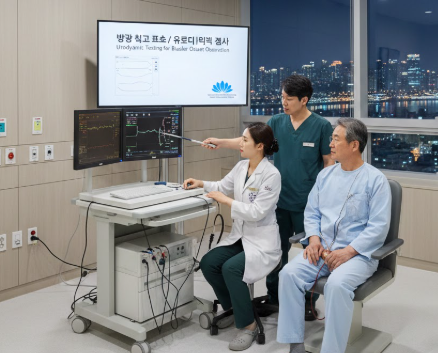Treatment Overview
The Minimally Invasive Ovarian Cyst Treatment Program in Korea offers a highly advanced surgical option for women requiring safe, effective, and fertility-preserving ovarian cyst removal. This procedure utilizes state-of-the-art laparoscopic techniques that minimize trauma, reduce recovery time, and maximize precision. Korea has established itself as a world leader in minimally invasive gynecologic surgery, delivering exceptional care through a combination of cutting-edge technology and expert surgical expertise.
Ovarian cysts—fluid-filled sacs that can form on or within the ovaries—are a common condition in women of all ages. While many cysts resolve on their own, some require surgical removal due to size, persistence, symptoms, or risk of malignancy. Minimally invasive laparoscopic surgery offers an ideal solution, enabling precise excision while preserving healthy ovarian tissue and reducing patient discomfort.
Leading Korean medical centers such as Samsung Medical Center, Asan Medical Center, Severance Hospital, CHA Bundang Women’s Hospital, and Ewha Womans University Mokdong Hospital offer specialized minimally invasive ovarian cyst removal programs. These programs combine high-definition imaging, microsurgical tools, and individualized treatment strategies to ensure optimal outcomes for every patient.
Purpose & Benefits
The goal of minimally invasive ovarian cyst treatment in Korea is to completely remove cysts while maintaining ovarian integrity and ensuring a swift recovery. The program is designed to balance surgical precision with patient comfort and long-term reproductive health.
Key benefits include:
- Precision Surgery: Targeted excision of cysts with minimal impact on healthy ovarian tissue.
- Fertility Preservation: Procedures tailored to maintain ovarian function and reproductive potential.
- Minimal Scarring: Small incisions result in reduced scarring and enhanced cosmetic outcomes.
- Short Recovery Time: Most patients resume daily activities within one to two weeks.
- Reduced Pain: Less postoperative discomfort compared to traditional open surgery.
- Lower Risk of Adhesions: Advanced laparoscopic techniques minimize tissue trauma.
- Comprehensive Care: Personalized treatment plans and structured postoperative follow-up.
Korea’s minimally invasive ovarian cyst treatment program offers unparalleled precision, safety, and comfort, making it a top choice for women worldwide.
Ideal Candidates
This program is suitable for women who need surgical removal of ovarian cysts and prefer a minimally invasive approach that emphasizes rapid recovery and ovarian preservation. Ideal candidates include:
- Women with symptomatic ovarian cysts causing pelvic pain, bloating, or irregular menstruation.
- Patients with cysts that persist beyond observation or medication management.
- Women with large or complex cysts requiring surgical intervention.
- Patients with suspected borderline or malignant cysts.
- Women who wish to maintain fertility while undergoing surgery.
Korean gynecologic specialists conduct detailed preoperative assessments—including ultrasound, MRI, and lab tests—to design a customized surgical plan.
Possible Risks & Complications
Although minimally invasive laparoscopic cyst removal is safe and effective, potential risks include:
- Bleeding: Rare but possible during cyst excision.
- Infection: Minimally invasive surgery reduces infection risk but cannot eliminate it entirely.
- Adhesion Formation: Reduced compared to open surgery but still possible.
- Damage to Surrounding Organs: Rare due to high-definition visualization and advanced surgical tools.
- Recurrence of Cysts: Possible depending on cyst type and underlying health conditions.
Korean surgeons minimize these risks through meticulous planning, precision technology, and thorough postoperative care.
Techniques Used
The minimally invasive ovarian cyst treatment program in Korea utilizes advanced laparoscopic technology and surgical innovation:
- High-Definition Laparoscopy: Magnified imaging for precise excision of cysts.
- Microsurgical Instruments: Allow targeted removal while sparing healthy ovarian tissue.
- Energy-Based Devices: Minimize bleeding and tissue trauma.
- Single-Port or Multi-Port Access: Selected based on cyst size and complexity.
- Intraoperative Imaging: Ensures complete cyst removal and ovarian preservation.
This integration of advanced technology and surgical skill guarantees safe, effective, and fertility-preserving ovarian cyst treatment.
Recovery & Aftercare
Minimally invasive ovarian cyst surgery in Korea prioritizes comfort and rapid recovery. Most patients are discharged within 1–2 days and resume daily activities within one to two weeks.
Postoperative care includes:
- Short hospital stay with observation.
- Tailored pain management.
- Early mobilization to enhance recovery.
- Guidance on diet, incision care, and physical activity.
- Follow-up imaging to ensure complete cyst removal and assess ovarian health.
Korean hospitals provide holistic aftercare, offering both medical monitoring and patient education for lasting results.
Results & Longevity
Minimally invasive ovarian cyst removal offers lasting relief from symptoms and preserves ovarian function. Korean hospitals report high success rates, minimal complications, and high patient satisfaction.
Patients benefit from improved menstrual health, relief from pelvic discomfort, preserved fertility, and better quality of life. With proper follow-up, recurrence rates are significantly reduced.
Treatment Process in Korea
- Consultation: Detailed medical evaluation, imaging, and history review.
- Preoperative Planning: Individualized surgical strategy tailored to the patient.
- Surgical Procedure: Minimally invasive laparoscopic excision using high-precision tools.
- Recovery: Short hospital stay and structured aftercare.
- Follow-Up: Imaging and consultation to ensure recovery and ovarian health.
Korea’s hospitals ensure a smooth, efficient, and patient-focused process.
Cost Range
Costs for minimally invasive ovarian cyst treatment in Korea depend on cyst complexity and hospital:
- Standard Laparoscopic Cystectomy: ₩4,500,000 – ₩7,500,000 KRW ($3,300 – $5,500 USD)
- Advanced or Robotic-Assisted Laparoscopic Cystectomy: ₩8,000,000 – ₩12,000,000 KRW ($6,000 – $9,000 USD)
These prices reflect Korea’s high-quality surgical care, advanced technology, and patient-focused services.
Popular Clinics for Minimally Invasive Ovarian Cyst Treatment in Korea
- Samsung Medical Center – Leaders in laparoscopic gynecologic surgery.
- Asan Medical Center – Experts in fertility-preserving cyst removal.
- Severance Hospital – Known for advanced minimally invasive procedures.
- CHA Bundang Women’s Hospital – Specialists in customized gynecologic surgery.
- Ewha Womans University Mokdong Hospital – Combines innovation with compassionate care.




